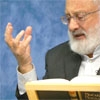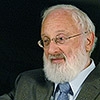 From Rabash’s article “The Matter of Root and Branch”: It is important to separate the internal from external. An external branch has to match its spiritual root, but an internal branch can abide without its external root.
From Rabash’s article “The Matter of Root and Branch”: It is important to separate the internal from external. An external branch has to match its spiritual root, but an internal branch can abide without its external root.
In order for “the Land of Israel,” which originates from its spiritual root “Malchut” (the Creator’s governance), to set in the human heart, it is not necessary to physically be in the Land of Israel. A person may be granted the Creator’s presence (Shechina) and be worthy of great attainment while staying outside Israeli boarders like all great Kabbalists who lived abroad.
“Internal” stands for the work in the heart that has nothing to do with “external.” But at the same time, “external” is also extremely important. For example, there is a law that one should pray in a “Minyan” (ten men), but it is redundant to check on the level of spirituality they have attained; any ten men can pray and read from the Torah. But nine perfect, righteous men are prohibited from praying together.
Material actions (“branches”) shouldn’t be confused with corresponding spiritual actions (“roots”). Earthly actions (traditions of this world) have nothing to do with the spiritual level of a person and by no means can define it. Anybody can bring sacrifices to the Temple, but only a few are able to make “spiritual sacrifice,” meaning the correction of their egoistic desires by the Upper Light.
Any person is able to distinguish between those desires that can be shifted into bestowing ones (“sacred”) and raised to the level of bestowal (“Temple”), meaning to raise Malchut to Bina. Malchut stands for a “house,” Bina for “sanctity.” Malchut rises to Bina, thus creating a “House of Sanctity” (a Temple) in Bina.
All “internal” actions that a person performs within the property of Bina are called “sacrifice.” With the help of the Light, a person manages to transform his “inanimate,” “vegetative,” and “animate” desires into altruistic, “speaking” level desires.
The correction of each desire happens consecutively by undergoing three impacts of the Light: “Kohen,” “Levi,” and “Israel,” thus bringing it to similarity and merging with the Creator. It is called “to sacrifice” (Korban), meaning to become closer (Karov) to the Creator. These steps of correction define the spiritual height of a person.
Physical implementation of actions that are related to spirituality but look irrational in this material world are called “commandments,” that is, traditions or rituals (Minhag). They don’t depend on the fact as to whether a person has attained spirituality or not, or whether he is planning to make corrections in his spiritual roots.
In our world, we can undertake certain material actions that reflect spiritual deeds, but they are in fact just folklore traditions. They do not correct us or our desires and we can determine this by watching people who observe them.
In order to correct our desires, we have to connect with the Upper Light which in turn alters them through the intention to bestow.
From the 1st part of the Daily Kabbalah Lesson 8/1/10, Article, “The Matter of Root and Branch”
Related Material:
Laitman.com Post: Breaking The Wall Between The Worlds
Laitman.com Post: Cultural Inventions Of Humanity
Laitman.com Post: The True Meaning Of Sacrifice
Filed under: Daily Kabbalah Lesson, Inner Work - No Comments →
 Rabash, “The Purpose Of The Association“: We have gathered here in order to create a group in which every one of us will aspire to give pleasure to the Creator. However, in order to achieve this we must first learn to give pleasure or bestow to man. In other words, we must learn to love our neighbor. Only by suppressing one’s own egoism is it possible to carry out this Commandment of love for one’s neighbor.
Rabash, “The Purpose Of The Association“: We have gathered here in order to create a group in which every one of us will aspire to give pleasure to the Creator. However, in order to achieve this we must first learn to give pleasure or bestow to man. In other words, we must learn to love our neighbor. Only by suppressing one’s own egoism is it possible to carry out this Commandment of love for one’s neighbor.














